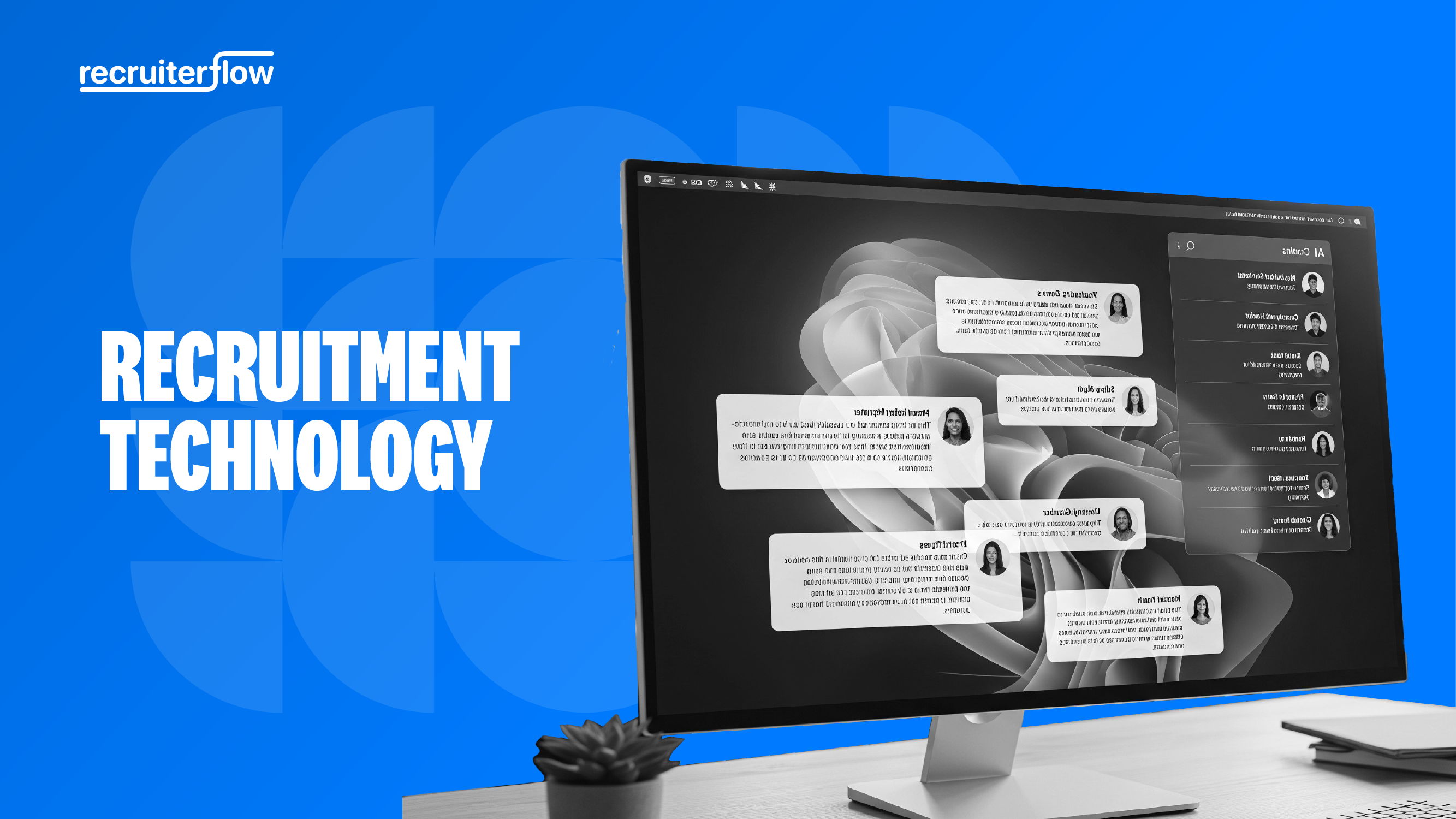
How to start your Retained Executive Search Business?

If you’re thinking of starting a retained executive search agency or thinking of adding retained executive searches to your services, here’s where you start.
According to IBISWorld,
Over the past five years, revenue for the executive search market grew at a CAGR of 2.3% to an estimated $10.5 billion, including an estimated 1.7% boost in 2024 alone. Profit is expected to reach 9.3% of revenue in the same year.
This high profitability makes your decision to offer retained executive search services an excellent business decision too.
To help you get started on your journey, this article will offer some in-depth knowledge about the nature of the retained executive search, its pros and cons, best practices, and steps on getting started with your first search.
What is Retained Executive Search?
Retained executive search is meant solely for sourcing and placing candidates in senior-level (usually C-suite) positions.
Executive roles require top-tier professionals who are in high demand and often already hold prestigious, well-paying jobs. Due to the complexity and time [ closing executive searches take between 90 to 180 days, often longer] involved, clients pay a retainer fee to the search firm, regardless of whether a placement is made.
Retained executive search firms must have extensive knowledge and experience in the industry. They should be able to find a pool of high-level talent that fits role requirements as well as the company’s values, culture, and work environment.
This is essentially what your clients are paying for.
Starting an executive search business comes with its own set of challenges. To read them, click here.
How to start your retained executive search business
Find your niche
Before setting out on an actual retained executive search, you have to zoom out a bit. These searches target specialized and niche roles, and that starts with the recruiter (you) finding their niche.
As an experienced professional/firm, you already have successful placements in your portfolio. Examine them to find the most successful searches, and see if there is a trend. Do you have more placements in a certain industry? That might be your niche.
For generalists seeking to embark on retained searches, ask yourself: what kind of clients do you usually succeed with? For instance, have you obtained more successful placements in the B2C sectors than in B2B? Then you know what to focus on.
Whatever your niche, it is best to specialize in one or two, at least in the beginning.
Build your brand
Once you know your niche, you can start to build your brand. When brainstorming about brand-building and your agency launch (or relaunch), consider:
- Who is your primary target audience within the niche?
- What examples of existing companies can you serve better than your competitors?
- Who are the decision-makers within these companies? Who will eventually decide to hire your services?
- What executive talent requirements do your target companies seem to share?
- How are your competitors seeking to meet these needs?
- How can you stand out from the crowd in this regard? What advantages can your services provide?
- Are there any financial, social, and industry trends impacting your target audience?
Once you can answer these questions, you have the fundamentals of your brand story and identity – in other words, you have the values and goals to present to prospective clients.
Secure the right recruiters (if you don’t have them already)
If you’re a new firm, you’ll have to rely on your personal reputation, as well as those of your business partners and employed recruiters. To attract the right folks for the job, ask:
- What do you need from your executive recruiters?
- How can you judge their work and its fitness for your firm?
- How can you check if a recruiter’s skills are relevant to your niche and list of potential clients?
- What attitudes and tactics do currently successful recruiters (in your niche) seem to share?
- What industries should your recruiters ideally have significant experience in?
- What kind of industry networks and connections do you expect recruiters to bring to the table?
- What can your company offer to attract the best recruiter? For example, do you have flexible work schedules?
- How can working for your firm advance their careers?
Based on these considerations, you can create a framework to hire and establish the right people for your new firm and venture.
Find and establish the right networks to attract top talent
Once you have your first client, you’ll have to spring into action and locate candidates. To do so, you’ll require established networks and tactics to find executive talent at relatively short notice. When your clients ask, “Why these candidates? How will they fit within your organization and leadership team? What do they add culturally to the team?”, you should have very good answers.
- Invest in research: You should have a list of connections within your niche. Given your previous successes in recruitment, you should have, at least, an initial list to work with – previous placements, current candidates, and industry contacts.
Run deeper research into your industry, and find thought leaders. Don’t forget professionals who might be outside of C-suite positions, but are clearly on track for those roles. Many of these top performers may not be interested in a role change but can recommend others too. - Use social media: Check the LinkedIn or Facebook account of potential candidates to understand their professional opinions and trajectory. Now, this is no substitute for in-person interactions, but it helps expand your idea of their profile and fitness for a role.
Also read our blog on how AI is transforming executive search.
Find your first client
Once you have a portfolio, internal systems, and professional networks in place, it’s time to find your first client.
- Start by looking for leads. Are there any companies in your niche that have raised funding recently or have been acquired? They will probably be looking to hire.
- Has your network alerted you about any executives in your niche who have been experiencing friction with other execs and their boards of directors? They might be looking to change jobs.
- Have any companies made hires that haven’t directly contributed to net worth, valuation, and market share? They might be rethinking their hiring choices or business valuation firms.
- Have any companies in your niche opened new branches or expanded in any way? They will probably be hiring.
- Leverage your network. Have any of your partners or employees found any leads you can use to get started?
- Reach out to past clients who are satisfied with your work. Do you have recommendations for companies you can pursue with your services?
- Have any of your past clients acquired capital and possibly looking to expand? You have a better chance of engaging with them due to past experiences.
Retained Executive Search Vs. Contingent Search
For you to have a clear idea of retained executive search, it’s important to look at the other commonly used recruitment model: contingent search.
Contingent searches are used to find candidates for niche individual contributor roles that generally don’t go beyond the Director or VP level. Firms running contingent searches have non-exclusive contracts with clients – they only pay when you find them a candidate they hire.
Clients generally work with multiple contingent search firms so as to fill the position as quickly as possible. That means, your competitors might be getting access to the same candidates as you, if the firm is also being used by your opposition. For a contingent search to be successful, clients must be able to make quick decisions.
| Retained Executive Search | Contingent Search |
| Consultants have to conduct comprehensive research, of the clients as well as all the candidates. This includes references, interviews, and expert assessments. | Identifies, assesses, and selects the best possible candidate for a role. |
| Consultants work with a small number of assignments so that they can focus decidedly on every single client’s requirements. | The agency is only paid after a placement is made |
| The consulting/retainer fee is charged right at the beginning of the venture. | Consultants reach out to their networks, advertise roles, and scan through online databases to compile multiple resumes quickly. |
| Consultants have to conduct comprehensive research, of the clients as well as all the candidates. This includes references, interviews and expert assessments. | Identifies, assesses and selects the best possible candidate for the role. |
| Used to find candidates for roles at senior levels (C-suite execs and board directors). | Used to find candidates for roles between entry to mid-level positions. |
You can also check out our detailed guide on executive search strategy.
Best Practices for a Successful Retained Executive Search
As markets keep becoming more competitive and cut-throat, retained executive searches get more complex and difficult to accomplish. Agencies and consultants need as much help as they can get, and the following best practices are a great place to start:
- Gather a deep understanding of client requirements: You’ll have to create a detailed job description (JD) that lists the necessary skills, experience, and qualifications. To create a compelling enough JD, start by conversing with the client to understand their company’s unique environment, leadership style, team dynamic, and company values.
When creating the JD, utilize some storytelling. For example, when describing the company, paint a word picture of its origin story, evolution, challenges, aha moments, and growth milestones. Make the job appealing at first glance for candidates. - Engage in regular communication with clients: Regularly update your clients with information on the search progress, market responses/feedback, and any adjustments made to candidate profiles. In turn, ask for client feedback on the candidates you’ve already presented, to ensure that you can adjust your approach if needed.
- Establish realistic timelines: Inform your clients of a realistic timeline at the beginning. The point of retained executive searches is to find the right candidate, not just any candidate as long as it’s fast.
Put some milestones in place so clients know that the search is on track. Additionally, inform your clients that high-level execs take longer to engage and that the process requires patience and flexibility to offer desirable results. - Maintain Discretion: Often, clients will ask to keep a retained search confidential, especially if the role is sensitive. Clarify the level of confidentiality expected, right at the beginning. You may have to sign an NDA with the candidate once they are on track to be hired.
- Design a rigorous candidate interview: You’ll have to vet candidates through reference checks, assessments, and interviews. Create a pointed, client-specific interview process including elements like psychometric testing and leadership assessments (if needed). Create assignments that also test a candidate’s ability to lead, manage, and adapt to the company’s culture.
- Actively involve stakeholders: A well-structured board meeting agenda can help align key stakeholders—board members and C-level officers—on the ideal candidate profile. By including discussions on hiring priorities and expectations in the agenda, organizations can address any discrepancies early, ensuring a unified vision before the interview process begins
- Pay attention to the candidate experience: A candidate will relate their recruitment experience to your client’s company. Your search firm should provide a completely professional and dignified experience throughout.
- Expect negotiation: The compensation package should be competitive; remember that you are dealing with C-suite and Director-level experts. At the same time, expect a few cycles of negotiation between the client and candidate.
For more success tips, read our blog – how to be successful in the executive search business
Ideal Commission Structure for a Retained Executive Search
The average industry commission structure for retained search fees includes about 30 to 35% of the projected first-year salary for the role in question. Typically, your client will make payments in three stages:
- One-third of the total fee is paid at the beginning of the search.
- 1/3rd is paid 60 days into the search.
- The final 1/3rd is paid once a client recommended by you (the firm) is hired by the company.
Sample of Retained Executive Search Agreement
A retained executive search agreement should include:
- The firm’s name, business address, business email address, and contact details.
- The principal contacts at the firm.
- The position your firm is expected to help fill.
- Start and end dates for the contract.
- The exact services to be offered – interviews with stakeholders, candidates, advertising, reference checks, etc.)
- Non-solicitation terms, i.e., how long the hired candidate cannot be recruited for another job.
- Terms of compensation – payment schedule, fee structure, additional expenses, etc.
- Efforts towards Affirmative Action – details on actions your firm will take to ensure compliance with AA/EEO laws, if applicable to the client.

For a deeper dive, have a look at Chalre Associates’ breakdown of the Terms and Conditions generally set out in executive search agreements.
Additionally, here’s an excellent example of such a contract drafted by Cornell University. Download it from the page, and adjust the terms to meet your requirements.
Streamlining the search with Recruiterflow
Firms will have their hands full with any retained search. Because of the high fees, your employees will be expected to provide impeccable service at every step – holding launch meetings, creating the position and candidate specifications, developing a research strategy, conducting said research, querying sources, qualifying prospects, interviewing and pre-reference these prospects, writing candidate profiles, presenting candidates, tracking progress, schedule client interviews, and extend offers.
This is a massive list of tasks, and hiring managers need the right executive search software to get them done with the expected speed and quality. Recruiterflow, for instance, offers a multitude of features to help accomplish such a search:
- A powerful application tracking system built to track candidates, post jobs, and more.
- System to track your revenue pipeline and manage client relationships.
- Email sequences are designed to help turn prospects into leads.
- Reports with a wide range of actionable insights and projections to help understand and enhance your team’s performance.
There’s more, and we’d love to talk to you about it at your personalized demo of Recruiterflow.
Recruitment





Abhishek Sharma